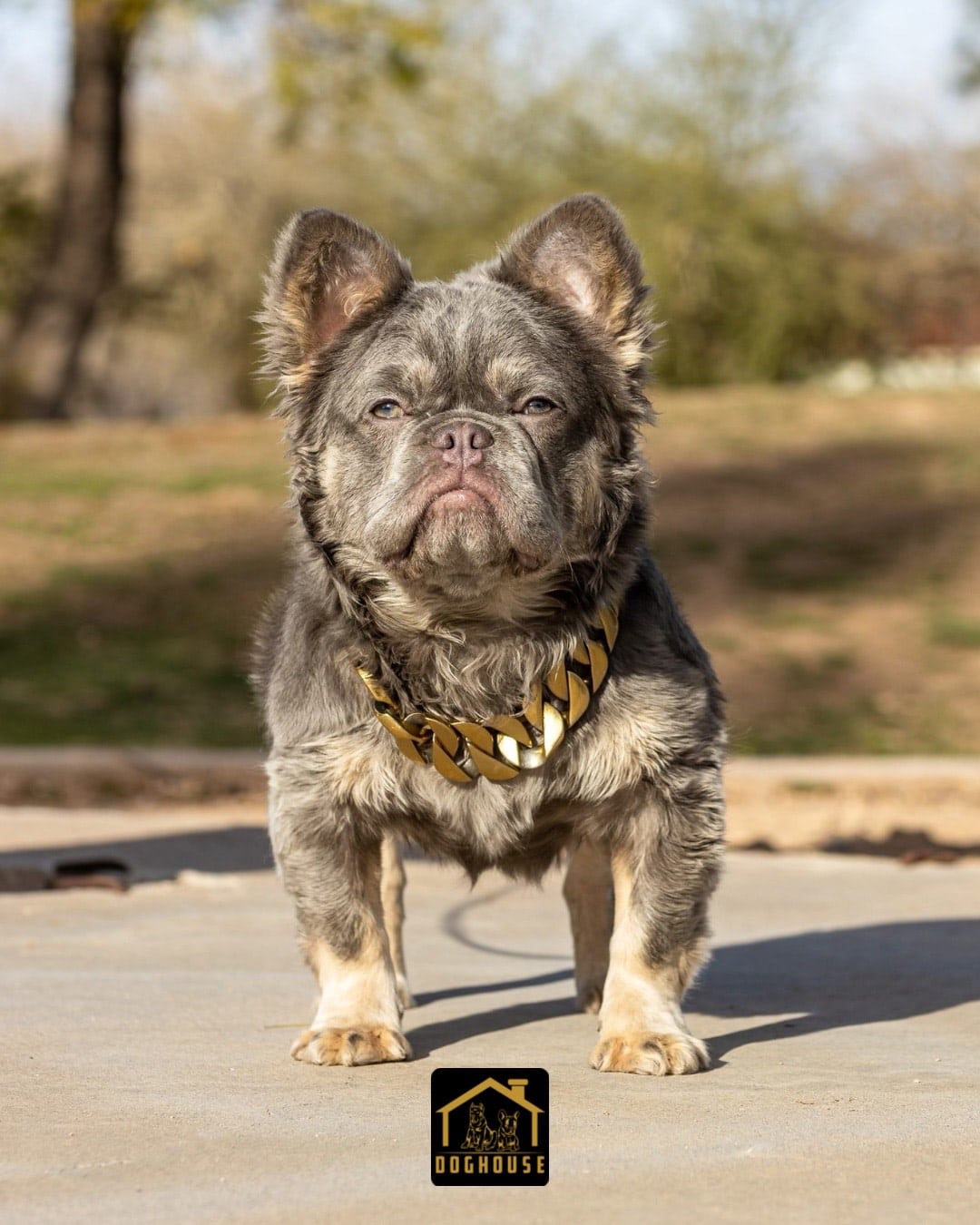Yes, dogs can eat pineapple in moderation. Pineapple is a tasty and healthy snack for dogs when given in small amounts. It’s packed with vitamins, minerals, and fiber, which can be beneficial to a dog’s diet. However, it also contains sugar, so it should be given as an occasional treat rather than a regular part of their diet. Additionally, make sure to remove the prickly outer peel and hard inner core before offering it to your dog to avoid any choking hazards or digestive issues.
How Much Pineapple to Give a Dog
The amount of pineapple you should give to your dog depends on their size and overall diet, but a good rule of thumb is to keep it to just a few chunks as an occasional treat. Here’s a general guideline:
- Small dogs (under 10 lbs): One or two small bites of pineapple.
- Medium dogs (10-50 lbs): Two to three chunks of pineapple.
- Large dogs (over 50 lbs): Three to four chunks of pineapple.
It’s important to introduce pineapple, like any new food, slowly into your dog’s diet to monitor for any adverse reactions such as gastrointestinal upset. Always ensure that the pineapple is fresh and free of any syrup or additives if canned.
Can Dogs Eat Canned Pineapple
Yes, dogs can eat canned pineapple, but it’s important to choose the right type. Always opt for canned pineapple that is packed in water or its own juice rather than syrup, as syrup contains too much sugar, which is not good for dogs. However, it is recommended to avoid canned pineapple in general, but here are some steps below if you find the right type of canned pineapples.
When feeding your dog canned pineapple, make sure to:
- Check the ingredients: Avoid any canned pineapple with added sugars, sweeteners, or preservatives, which can be harmful to dogs.
- Rinse the pineapple: Even if it’s packed in juice, it’s a good idea to rinse the pieces under cold water to remove excess sugar.
- Serve in moderation: Due to its higher sugar content compared to fresh pineapple, serve canned pineapple in smaller quantities as an occasional treat.
As with any treat, it’s essential to introduce pineapple into your dog’s diet gradually and watch for any signs of digestive upset or allergies.
Can Dogs Be Allergic to Pineapple
Yes, dogs can be allergic to pineapple, though it is relatively rare. Just like humans, dogs can have allergies to virtually any food. If your dog is allergic to pineapple, they might exhibit symptoms such as itching, swelling, digestive upset, or difficulty breathing after consuming the fruit.
If you’re introducing pineapple to your dog for the first time, start with a small amount and watch for any signs of an adverse reaction. If you notice any symptoms of an allergy, stop feeding them pineapple and consult your veterinarian for advice.
How Should I Feed Pineapple to My Dog
Feeding pineapple to your dog safely and correctly involves a few simple steps to ensure they enjoy this treat without any health issues. Here’s how you can do it:
- Choose ripe pineapple: Fresh pineapple is the best option because it’s free of any added sugars or preservatives that are commonly found in canned versions. If you use canned pineapple, ensure it is packed in juice, not syrup, and rinse it to remove excess sugars.
- Prepare properly: Remove the tough, outer skin and the hard inner core of the pineapple. These parts can be difficult for dogs to digest and may pose a choking hazard.
- Cut into small pieces: Chop the pineapple into small, bite-sized chunks. This makes it easier for your dog to chew and digest.
- Introduce gradually: If your dog has never had pineapple before, start with a small amount to see how they react. Some dogs might have sensitive stomachs or allergies.
- Moderation is key: Pineapple should only be given as a treat, not as a regular part of your dog’s diet. Because of its high sugar content, pineapple is best served in moderation. Depending on the size of your dog, a few chunks will suffice.
- Watch for reactions: After feeding pineapple to your dog, keep an eye out for any signs of digestive upset such as diarrhea or vomiting. Also, watch for any signs of allergic reactions, such as itching or difficulty breathing.
By following these steps, you can safely incorporate pineapple into your dog’s diet as a delicious and nutritious occasional treat.
How To Stop Dogs From Eating Poop
Pineapple is sometimes used as a home remedy to discourage dogs from eating their own feces, a behavior known as coprophagia. Pineapple contains bromelain, an enzyme that can make the poop taste unpleasant to dogs after they’ve eaten the fruit. However, the effectiveness of this method can vary from dog to dog.
If your dog is eating their poop regularly, it’s important to address this behavior as it could be linked to nutritional deficiencies, health issues, or behavioral factors. Here are a few strategies besides adding pineapple to their diet:
- Ensure proper nutrition: Sometimes, dogs eat poop because of nutritional imbalances or deficiencies. Make sure your dog is eating a well-balanced diet appropriate for their age, weight, and health status.
- Keep the environment clean: Regularly remove poop from your yard or the dog’s environment to reduce the opportunity for them to engage in this behavior.
- Increase supervision: Watch your dog closely on walks and in the yard, and distract them or redirect their behavior when they attempt to eat poop.
- Training and reinforcement: Train your dog to come to you for a treat when they eliminate instead of turning to eat their poop. Use commands like “leave it” and reward them for obeying.
- Consult a vet: It’s a good idea to discuss the behavior with your vet to rule out any underlying health issues and to get specific advice tailored to your dog.
If you choose to use pineapple, remember to give it in moderation and monitor how your dog reacts to this addition to their diet.
Which Fruits Are Good For Dogs
Many fruits are safe and beneficial for dogs, offering a great source of vitamins, minerals, and hydration. However, it’s important to introduce any new food in moderation and ensure that it’s prepared properly to avoid any health issues. Here are some fruits that are generally good for dogs:
- Apples – High in fiber and vitamins A and C. Make sure to remove the core and seeds before feeding.
- Bananas – A good source of potassium, vitamins, biotin, fiber, and copper. They are high in sugar, so only feed them in moderation.
- Blueberries – Rich in antioxidants, fiber, and vitamins C and K.
- Cantaloupe – High in water content and nutrients, but also sugar, so it should be given in moderation.
- Mango – Contains vitamins A, B6, C, and E, and is high in fiber and antioxidants. Remove the pit and skin before feeding.
- Oranges – Good for vitamin C, potassium, and fiber. Only feed the fleshy part in small quantities because of the citric acid and natural sugars.
- Peaches – Good for vitamins A and C but make sure to remove the pit first.
- Pears – Offer vitamins C and K, and fiber. Remove the pit and seeds first, and feed in moderation.
- Pineapple – Full of vitamins, minerals, and fiber. It’s also a treat due to its sweetness.
- Raspberries – Low in sugar and calories but high in fiber, manganese, and vitamin C. Limit to small quantities because they contain slight amounts of xylitol.
- Strawberries – High in fiber and vitamin C. They also contain an enzyme that can help whiten your dog’s teeth.
Always remove pits, seeds, and stems from fruits, as these can be choking hazards or contain harmful substances. Avoid fruits like grapes, cherries, and avocados, which can be toxic to dogs. If you’re introducing a new fruit, start with small amounts to see how your dog reacts.
Conclusion
In conclusion, pineapple can be a safe and enjoyable treat for dogs when given in moderation. Rich in vitamins, minerals, and fiber, it offers several health benefits. However, it’s important to prepare it properly by removing the tough outer skin and hard inner core to prevent choking or digestive issues. Always introduce pineapple gradually into your dog’s diet to monitor for any adverse reactions, such as allergies or gastrointestinal upset. Although some owners use pineapple to deter coprophagia, its effectiveness can vary. Whether fresh or canned (without syrup or additives), pineapple should only be a small part of your dog’s treat regimen due to its high sugar content. Always consult with a vet if you’re unsure about introducing new foods to your dog’s diet.











